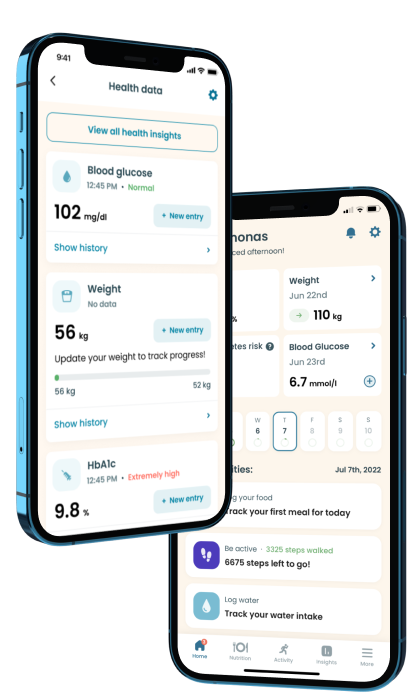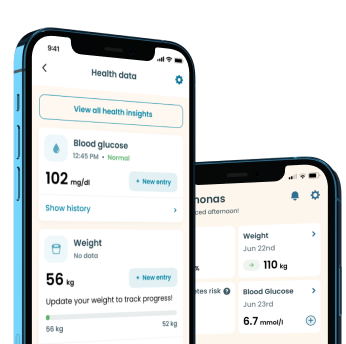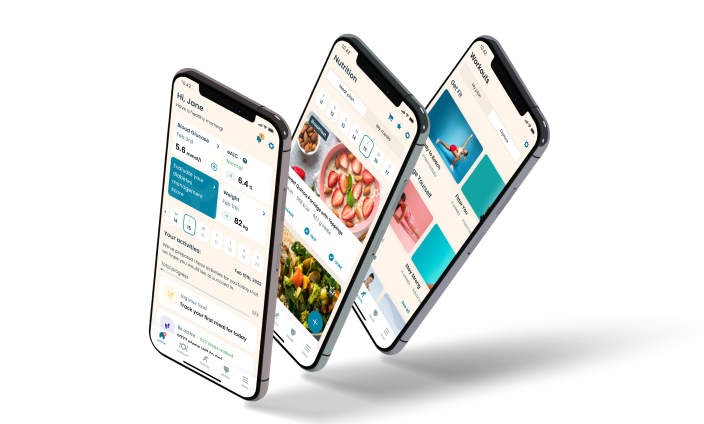Noodles and Diabetes

Bad
42
384 kcal
Noodles are a widely consumed dish around the world. Although they're cheap and easy to make, there's much debate about their harmful effects on a diabetic’s health. This is because they are low in nutrients like protein and fiber but rich in sodium and carbs.
Due to these concerns, some people steer clear of noodles, fearing it may harm their health by raising their blood sugar levels. However, is their fear justified? We’ll get to see in this article as we discuss the link between the consumption of instant noodles and diabetes.
Nutritional value
- Protein 14.2 g
- Carbohydrate 71 g
- Fat 4.4 g
- Fiber 3.3 g
- Sugar 1.9 g
- Cholesterol 84 g
The Nutritional Value of Noodles
Noodles' nutritional composition varies slightly based on the type or flavor of noodles. To give you an idea of the nutritional content of instant noodles, here's the nutritional content in one serving (about 1.5 oz) of instant ramen noodles:
- Energy – 385 cal
- Total fat – 14.5 g
- Carbohydrate – 55.7 g
- Saturated fat – 6.5 g
- Fiber – 2.0 g
- Protein – 7.9 g
- Sodium – 986 mg
- Niacin – 4.6 mg
- Thiamine – 0.6 mg
- Riboflavin – 0.4 mg
Take a quiz
Discover what Klinio app can do for you
Healthy diabetes meal plan crafted just for YOU

Personalized workouts with no equipment needed

Track your progress with smart tracking tools

Why Are Noodles Not Considered Safe for Diabetics?
To resolve any uncertainty you might have on the safety of noodles’ consumption while managing diabetes, we have put together some factors, as we would see below.
High Sodium Content
Instant noodles can contain anything from 397 to 3678 mg of sodium per 3.5 oz serving, and occasionally even more. This is relatively high considering the WHO recommended daily salt intake limit of 2 g. While salt is necessary for your body's optimal functioning, too much sodium is harmful to your health. Overall, people with diabetes are advised to limit their salt consumption as a high-sodium diet may increase their risk of developing high blood pressure, a prevalent diabetes complication. That is to say, noodles and diabetes don’t go hand in hand.
Low in Fiber and Protein
Instant noodles contain fiber and protein in low quantities, making them a poor weight-loss choice. Protein has been shown to improve satiety and reduce appetite, whereas fiber passes slowly through the digestive tract and promotes sensations of fullness. On the contrary, the intake of food options like noodles might prompt you to eat more than you should, thus making weight loss quite impossible.
Made of Refined Flour
Refined flour is a frequent ingredient in instant noodles. It already has a high starch index, and its carbohydrate content is comparable to many other healthy flour variations. They can affect the kidneys and blood sugar while causing weight gain, detrimental to anyone with diabetes.
Lacks Vital Nutrients
While instant noodles contain some micronutrients, they lack key nutrients such as vitamin A, vitamin B12, vitamin C, among others. This is particularly concerning as nutrients like vitamin C have been found beneficial in reducing blood sugar levels.
Still Bent on Consuming Noodles as a Diabetic?
On the one hand, people with diabetes can still eat quick noodles on occasion as long as specific requirements are followed. On the other hand, many people consume the entire noodle pack in one sitting, resulting in more than one serving at a go.
However, if you want to eat noodles, it is advised to compare the nutrient levels of different types and brands by looking at their labels. The following tips can come in handy:
- Look for the percentage of sugars: As mentioned above, carbohydrates can be found in refined flour and sugar content. If you can't find ones with no carbs from sugar, go for low sugared ones.
- A sodium-reduced diet is a way to go: Compare the sodium content of various brands and make your decision appropriately.
- Only about 5% of fat content, or about 10 g, should be taken: Higher than that is usually considered unhealthy for someone with diabetes.
- If options without added preservatives are available, select these to avoid the additional disadvantage.
Although these recommendations may be difficult to follow while searching for a healthy instant noodles brand, make sure you tick as many as possible off the list.
How Diabetics Can Include Noodles in Their Diet
Enure your total noodles consumption is within the ADA-recommended diabetic serving of ⅓ cup per meal. Additionally, you can try pairing it with other low-glycemic-index foods, such as non-starchy vegetables (e.g., celery).
Conclusion
Instant noodles, as cheap and easy to prepare as they are, can be a significant health hazard. As a person with diabetes, you should either avoid noodles consumption or stick to the recommended serving.

Download Klinio app!
Get more by downloading our free Klinio App. Analyze your health, form new habits and manage your diabetes anytime, anywhere.
OR
SCAN QR CODE



GET THE APP











